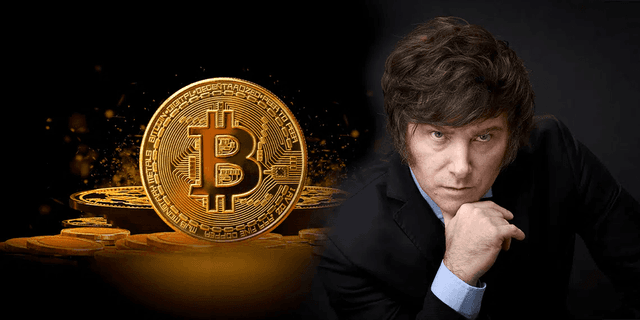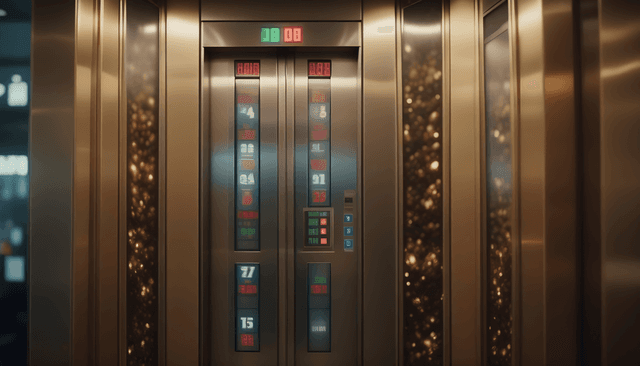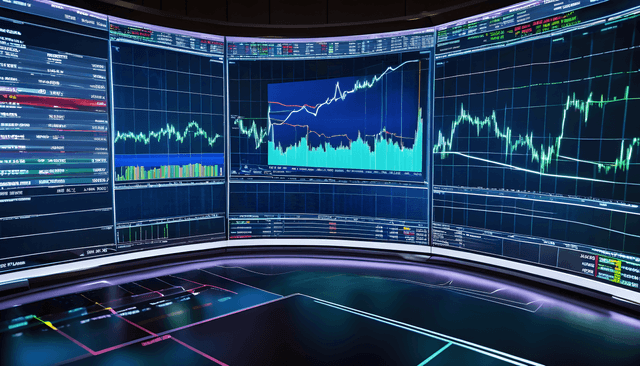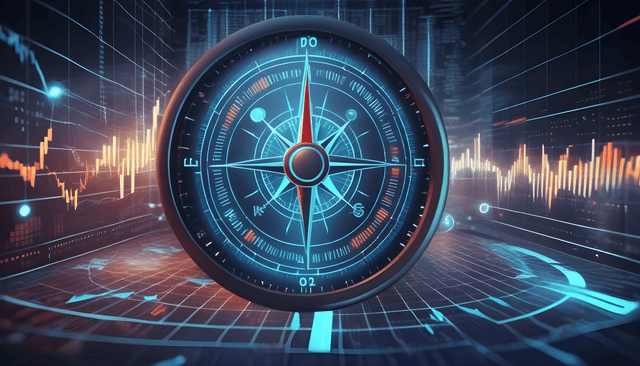Why Fed Targets 2% for Inflation? Why not More? Why not Less?
 Ardi AazizniaJanuary 17, 2023
Ardi AazizniaJanuary 17, 2023
3 reasons on why fed focuses on 2% inflation, and why they won’t stop until price stability is achieved.

Photo by Kenny Eliason on Unsplash
Over the last few weeks, there has been many talks over federal reserve, and other central banks around the world, raising rates aggressively, and aiming to cool inflation down to their 2% target.
But why 2%? Why this number? In this article, I am going to discuss three key reasons on why Fed and other developed central banks focus on the 2% target.
In order to make my argument clear, I first discuss why anything below 2% is not feasible. Later I bring three key reasons on why anything above 2% is not sustainable either.
First lets discuss why inflation below 2% is not ideal (Deflation)
Deflation means no growth, no prospect. That would lead into capital outflow out of a country which then in return lead to even more deflation. Small amount of inflation is actually good for economies. It means wage growth and nominal growth. If there is no inflation in an economy, the wages will not increase, neither would the GDP. The small amount of inflation allows consumption to grow marginally year over year. It will allow earnings to grow and as a result markets to grow. System’s survival is contingent on workers getting paid more, companies making more, and the stocks to go up.
But now that we have established the lower bound of inflation, and the fact that the inflation can not be zero or negative, let’s discuss why it must be 2% and not some other numbers.
There are three main reasons on why the 2% is an ideal number for most of developed economies: Inflation expectation, menu pricing theory and Conditional heteroskedasticity.
Reason 1: Inflation Expectation
You often hear inflation expectations on CNBC, Bloomberg, or other business news channels, but what does it really mean? It means what we expect the inflation is going to be in a foreseeable future. Our expectation on the future really impacts our behavior today.
Let’s look at a non finance example. If you assume that the AI and machine learning is the future and people working in these fields will make 6 to 7 figures over the next decade, given the option of studying accounting or machine learning, which one would you pick? Of course many factors play a role here from your interest, to your capabilities, but most often than not, you would pick the machine learning major. After all, making more money is always better than making less.
Our expectation about what the future looks like shapes our behavior today. If we assume that prices are going up 5% or more every year, we might ask for a raise much earlier, or be much more willing to quit and look for new employment opportunities with higher wages.
It is only at a steady level where we would not change our behavior. This is often called anchoring the inflation expectations. The 2% have been the long term fed target. The reason for the 2% is that any forecast have a small error term and inflation is covariance stationary (fancy way of saying it oscillates around a mean reverting level) so therefore sometimes it might come in at 2.5% to 3.0% and sometimes it might be around 1.5% to -1.5%. For this very reason a long term of 2% range is great in anchoring long term expectation and ensuring actors in the economy (producers, employees) continue to behave rationally.
How can we calculate long term inflation expectation? Easy, just look at TIPS
Currently, looking at the difference between the 5 year treasury inflation protected securities and 5 year treasuries, you can see that the inflation expectation has come down dramatically over the last year and is currently sitting at 2.21%. This is exactly what anchoring long term expectation means. If the number was any higher than 2%, the variance around it would be much higher and anchoring long term expectations would have been much harder.

Long term inflation expectation: 5-year TIPS minus 5-year treasuries currently sitting slightly above 2%.
Menu Pricing Theory
The second reason why fed targets 2% long term, is something many economist call “menu pricing theory.” In nature, this is very similar to inflation expectation.
The theory assumes you are a restaurant owner and are setting your menu. You understand that the menu printing, setting and changing all the little price stickers in store involves a lot of planning and costs. As a restaurant owner you do not want to change your menu every week, and at the same time you don't want to set your prices too low that it is barley keeping up with inflation. For this very reason, restaurant owners would put in a lot of time into their pricing when setting their menu. For that very reason, during the process of setting the menu, there is expectations of what the future of prices are going to look like. If you are in inflationary environment, the restaurant owner would assume even higher prices, because it does not want to re-print its menu over and over again every month.
In order to control this upward price spirals, the inflation rate has to be at a level that is much steady and easy to forecast. 2% does that job perfectly. A restaurant owner can assume prices will steadily rise by 2% over the next year and with that assumption, sets his menu. If inflation was 4% to 6%, that could eat into the margins of the restaurant owner and hence would lead into much higher prices. This cycle would continue on and on and create a hyper inflationary loop.
Conditional Heteroskedasticity
Last reason that fed targets a set price of 2%, is conditional heteroskedasticity. Now this is a complex statistical concept, but in order to break it down simply, just know that your error term is not constant, and gets larger and larger as one variable increases. Let’s break it down with a very simple example below:
Imagine if you want to predict someone’s income based on their age; meaning can someone’s age predict how much they are making. On the Y-axis you have income (your dependent variable, or the variable you are trying to explain), and on the x-axis you have age (explanatory variable). In the early years (0–18) it is pretty similar for everyone. Many are not working, or working part time at a minimum wage jobs, so there is not much variation in the results. You could conclude that the age does a good job of predicting income up to 18 to 22 years of age.
As the age increases however, the error term becomes much larger. A 50 years old person, might be a CEO of a company and make $5 million per year, and another 50 years old, might be a cashier and make $40,000 per year. We can see as our explanatory variable increases (age) it becomes much harder to predict what the dependent variable (income) would do. This phenomenal in statistic is called heteroskedasticity or non uniform error term.

As you move further in age, the variability of your income increases based on your level of your education, ethnicity, location, major studied in college, and many other factors.
Well, inflation is exactly like that. Around 0–2% the behavior is much more predictable and it is easier to model and forecast. But as soon as we get closer to 4–6%, the error term gets larger and larger and makes forecasting and policy making a nightmare.
We saw that last year with inflation numbers as well. One month the print was 1.3% and the very next month the reading came at 0%. Too volatile and hard to predict.

Major swing in Month over month CPI data: Showing why when inflation gets unanchored, due to non constant variance, forecasting gets hard
In order to create easy policy making, and avoid conditional heteroskedasticity, fed must aim for the 2% target.
Conclusion: Inflation Is the Enemy
I hope I was able to make the case for you on why the fed targets the 2%, and why this is a very important mandate for the fed. If inflation expectations gets unanchored, prices will rise, and that would eventually lead into hyper inflation. NO NATION has ever survived a hyper inflationary regimes. This goes back to 2,000 years ago when the Roman empire collapsed, to now on what we are seeing in Lebanon and Venezuela.
One Last Thing: Do Me a Favor ❤
I hope I was able to add value to you and your investing with this article. feel free to check out more by me or simply connect with me to stay up to date.
Let’s connect on LinkedIn! ❤
Follow me on Twitter! ❤
Check out my books on Amazon! ❤
Disclaimer: The content and materials available on this site are not intended to serve as financial, investment, trading, or any other form of advice or recommendation from Trading Terminal.
 Ardi Aaziznia
Ardi AazizniaArdi graduated from the University of British Columbia (Canada) with a concentration in accounting and finance. He is a best-seller author and accomplished trader who serves as the CEO of Trading Terminal. Ardi's accomplishments showcase a combination of academic excellence, trading prowess, and entrepreneurial leadership, making him a prominent figure in the financial world.







